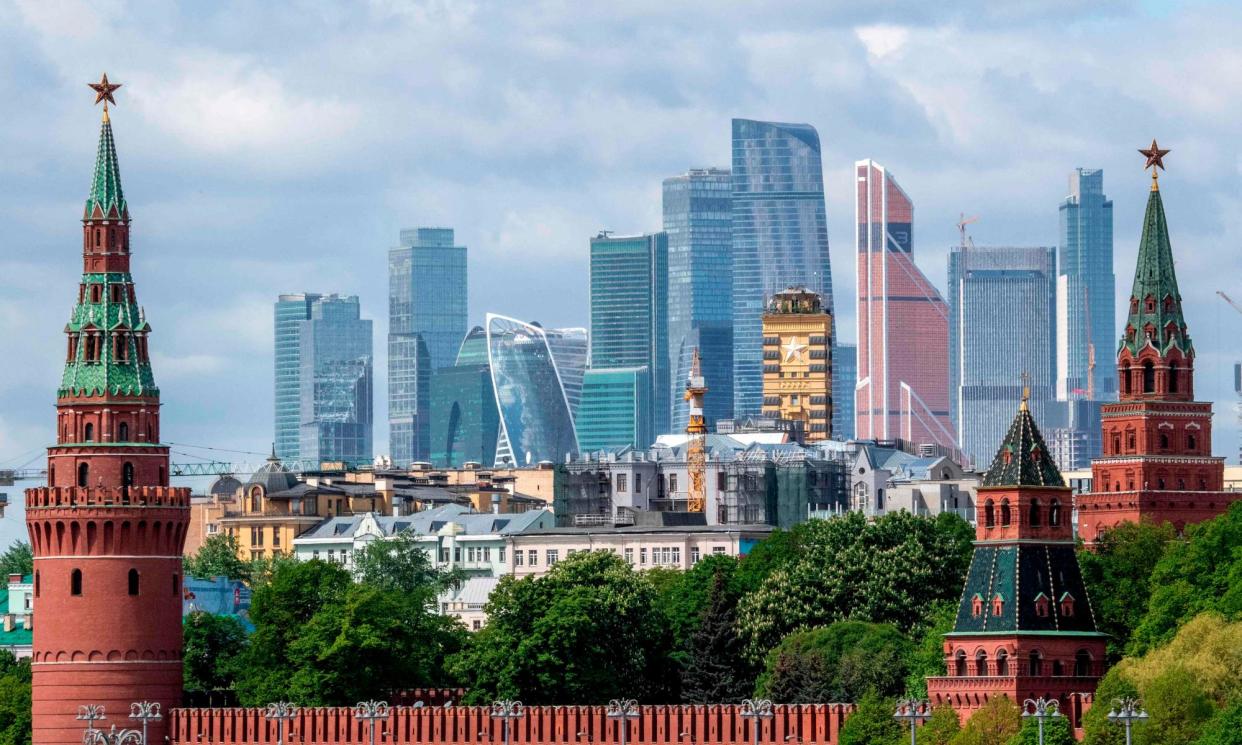Ukraine launches Moscow drone attack as Kursk offensive continues

Ukraine has carried out one of its biggest drone attacks on Moscow, as Ukrainian troops continue to advance in Russia’s Kursk region, with probing raids on frontline towns and villages.
Russia’s defence ministry said it had intercepted 11 kamikaze drones before they reached the capital. Several were shot down over the city of Podolsk, 24 miles south of Moscow and not far from Domodedovo international airport. Residents heard a buzzing in the night sky followed by loud explosions.
The ministry said it had destroyed 45 drones over Russian territory, including 23 in the border region of Bryansk and six over the Belgorod region. Two more were intercepted above Kursk province, where Ukraine launched a surprise invasion just over two weeks ago. Three more were downed over Kaluga. Others were spotted in the northern Murmansk region, apparently heading for an airfield used by strategic bombers.
“This is one of the largest attempts to attack Moscow using drones ever,” the city’s mayor, Sergei Sobyanin, wrote early on Wednesday on the Telegram messaging app.
On Monday Ukraine’s president, Volodymyr Zelenskiy, called for allies to lift restrictions on the use of western weapons against airbases and other strategic objects within Russia. These ballistic and cruise missiles, including the UK’s Storm Shadow, can be used only up to Russia’s border areas.
Zelenskiy said that red lines – imposed by the Biden administration because of fears of nuclear escalation – were now meaningless, as the war spread further and deeper into Russia. So far the US, UK and France have not been willing to update their policy.
In response, Kyiv has developed an increasingly ambitious drone programme and a new drone command. Speaking in July, the commander-in-chief of Ukraine’s armed forces, Oleksandr Syrskyi, said “about 200 critical infrastructure sites” had been attacked. All were connected with “military logistics”. They included factories, fuel dumps and refineries.
The strategy appears to be working. Fires continued to burn on Wednesday at a major oil depot in Proletarsk, a town in Russia’s Rostov oblast, four days after it was struck by drones. Another storage tank exploded. Firefighters have been unable to put out the blaze. At least 13 of them have been hospitalised.
Russia makes extensive use of drones and regularly bombards Kyiv and other Ukrainian cities. In a briefing, Syrskyi said that Moscow had fired 11,879 missiles and drones at Ukraine since the beginning of the 2022 invasion. Only 43% were shot down, he said. He added that around half were aimed at civilian targets.
On Wednesday Kremlin military bloggers said remotely operated drones destroyed four Ukrainian armoured vehicles heading towards Glushkovo, a village in the Kursk region. The settlement is on the edge of the existing Ukrainian incursion. This “buffer zone” covers more than 1,250 sq km, according to Zelenskiy.
As many as 3,000 Russian troops are believed to be trapped in the Glushkovsky district, which Ukraine is likely to try to seize. Over the past week Ukraine has bombed three bridges and a pontoon across the Seym River. It has also blasted a Russian border post in the town of Tetkino, farther west.
Video released on Wednesday showed US-supplied Himars rockets were responsible for the attack on the pontoon crossing, next to Glushkovo. The river and embankment erupted in dozens of explosions.
Separately, first-person-view drones were seen to chase after and destroy Russian engineering equipment and a truck.
Two weeks ago Ukrainian forces seized the town of Sudzha. They are now close to capturing another urban settlement, Korenovo, which had a prewar population of 5,500 people. Reports say they have reached its north-east outskirts. They have also suffered losses.
The Kremlin has scrambled reserves to the frontline to halt Kyiv’s progress and has transferred some units from their bases in Ukraine’s occupied south. The Kremlin has sought to downplay the Kursk mini-invasion – the first attack on Russian soil since the second world war, 80 years ago – dismissing it as the work of “terrorists”.
Zelenskiy’s surprise offensive has so far not stopped Russian troops from making further gains in Ukraine’s eastern Donetsk oblast. They reportedly took control of two more villages, Komyshivka and Zhuravka, after the capture earlier this week of the town of Niu-York. Soldiers in Zhuravka filmed themselves with a Russian flag in the yard of an abandoned house. “Glory to Russia,” they shouted.
The frontline is now 3 miles (5km) away from the town of Myrnohrad and about 7 miles (11km) from the city of Pokrovsk, a Ukrainian military hub. The authorities have urged civilians to get out. About 16,000 people are still in Myrnohrad. Some families were hiding their children to avoid compulsory evacuation, officials said.
“Life under constant shelling. Maybe without water and without light. Therefore, I appeal to the residents of Myrnohrad and the Myrnohrad community: don’t wait,” the acting mayor, Yury Tretyak, said.
Russia has been advancing in the eastern Donbas region since its capture in February of the Ukrainian city of Avdiivka. Its tactics are brutally effective. War planes drop powerful guided bombs on Ukrainian positions. Small groups of infantry then go forward, with round-the-clock sorties. There are large numbers of casualties.
Ukraine said on Wednesday that its military repelled more than 40 attacks from Russian forces hoping to break through the front in Pokrovsk during the day.
Kyiv said 238 Russian troops were killed or wounded in the attacks but did not disclose Ukrainian losses.


